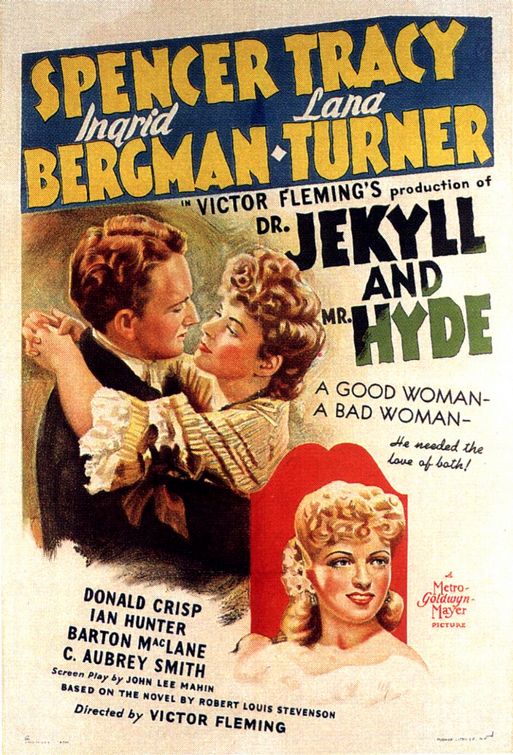 From the finest homes in London to the city’s back alleys, an experimenting physician is torn between the sincere love of his fiancée and the repressed lust for a barmaid.
From the finest homes in London to the city’s back alleys, an experimenting physician is torn between the sincere love of his fiancée and the repressed lust for a barmaid.
It is a mystery why M-G-M set out to film a remake of Robert Louis Stevenson’s novella Dr. Jekyll and Mr. Hyde, especially after the sound version only ten years earlier, with Fredric March in an Oscar-winning performance as the split personality of the title.
Remake it M-G-M did, and they were, to a degree, embarrassed. Sure, as the wealthiest, most prestigious studio, Louis B. Mayer’s artists and technicians had the advantage in sets and costumes—and the pick of actors, though some were not ideally cast or, even if they were, failed to deliver the performances required.
In the dual title role, Spencer Tracy, who didn’t want to do the part and considered his acting one of his worst, wanted to remain faithful to the Stevenson source, but M-G-M preferred to do practically a scene-by-scene remake of Paramount’s 1931 version. To watch the film, it’s easy to understand his misgivings: he’s too old (forty-one) to be romancing a twenty-one-year-old Lana Turner, who, despite even Tracy’s shortcomings, real or imagined, rendered the weakest performance in the film as Beatrix his fiancée.
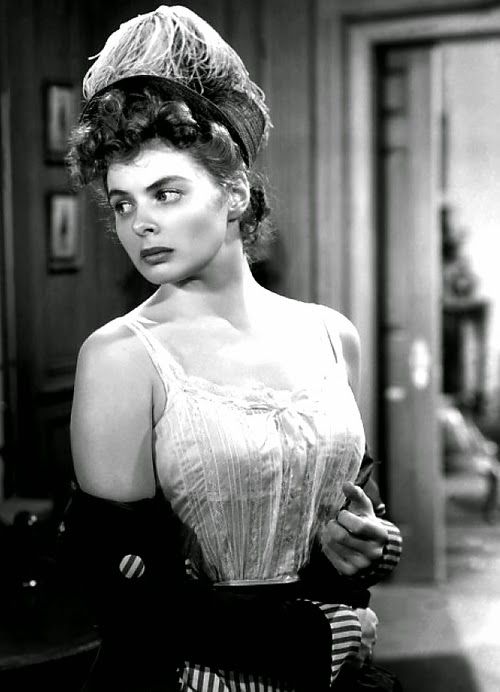 Ingrid Bergman was originally cast as the oh-so-innocent Beatrix, a thankless role, even if played well, but Ingrid convinced director Victor Fleming to give her the much more challenging role of Ivy, the barmaid (a prostitute in the 1931 film, though she is not in Stevenson’s novella) who entices Dr. Jekyll from the first. Beautiful as always, and beautifully shot by cinematographer Joseph Ruttenberg, Ingrid does well, but she doesn’t quite master the cockney accent.
Ingrid Bergman was originally cast as the oh-so-innocent Beatrix, a thankless role, even if played well, but Ingrid convinced director Victor Fleming to give her the much more challenging role of Ivy, the barmaid (a prostitute in the 1931 film, though she is not in Stevenson’s novella) who entices Dr. Jekyll from the first. Beautiful as always, and beautifully shot by cinematographer Joseph Ruttenberg, Ingrid does well, but she doesn’t quite master the cockney accent.
Tracy also wanted to create Dr. Jekyll’s transformation into the abominable Mr. Hyde without make-up or trick photography, but here, too, he was overruled. He wasn’t horrific enough. Further, he was deemed not “English” enough—Tracy, true, has a very American face—and, about as ridiculous, he was criticized for (go figure!) not looking physician enough!
In an early scene at a dinner attended by thirteen people (an accidental number?), Tracy, now as Dr. Jekyll before the deadly plunge from proper British decorum, discusses what then was a radical theory, especially to Beatrix’s father (Donald Crisp). “But, after all,” Jekyll says, “that’s the problem of civilized man’s soul, isn’t it?—that good and evil are constantly fighting one another. . . . [They] are so close as to be chained together in the soul. . . . Wouldn’t we be hypocrites if we didn’t admit that? We’ve all had thoughts that we didn’t want published or shouted out loud, and we certainly have had desires that are not confined to a drawing room.” The long scene is brilliantly filmed by Ruttenberg.
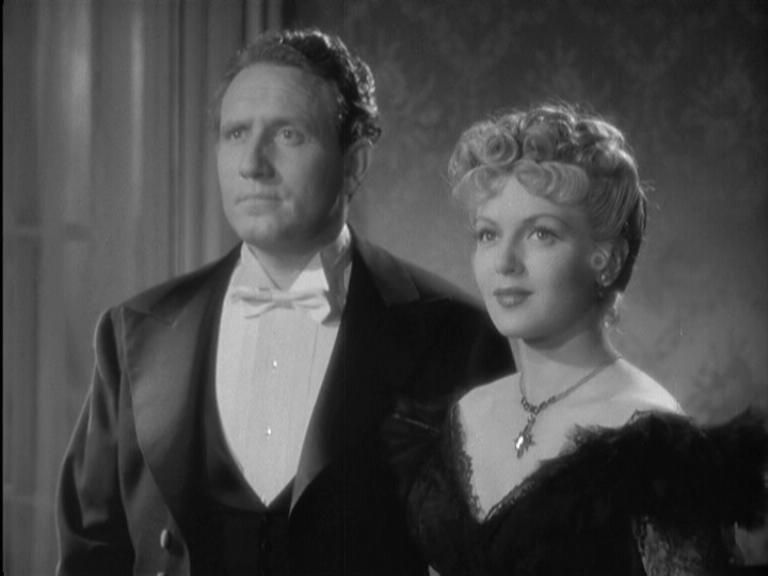 Though this extended dialogue scene, and others like it with intelligent subject matters, wouldn’t be permitted in most of today’s scripts, it was a theme upon which Tracy wanted to base his performance, avoiding the sensational and horrific side of the plot, but, still again, he had to comply with studio and conventional thinking.
Though this extended dialogue scene, and others like it with intelligent subject matters, wouldn’t be permitted in most of today’s scripts, it was a theme upon which Tracy wanted to base his performance, avoiding the sensational and horrific side of the plot, but, still again, he had to comply with studio and conventional thinking.
Why some of the scenes, especially the exterior ones, look so artificial is a mystery, considering that M-G-M prestige and wealth. Surprising further that set designer Edwin B. Willis, winner of eight Oscars, and the esteemed art director Cedric Gibbons, winner himself of eleven of the statuettes, would have allowed one scene in particular.
Tracy and party are stepping from a carriage to a London flat, only a few steps to the entry, a shot of perhaps ten seconds. Against the well-contrasted blacks and whites in the foreground, in the immediate distance is a façade of buildings—obviously a matte backdrop of the most uniform, light shade of blandness, with no relation to the foreground.
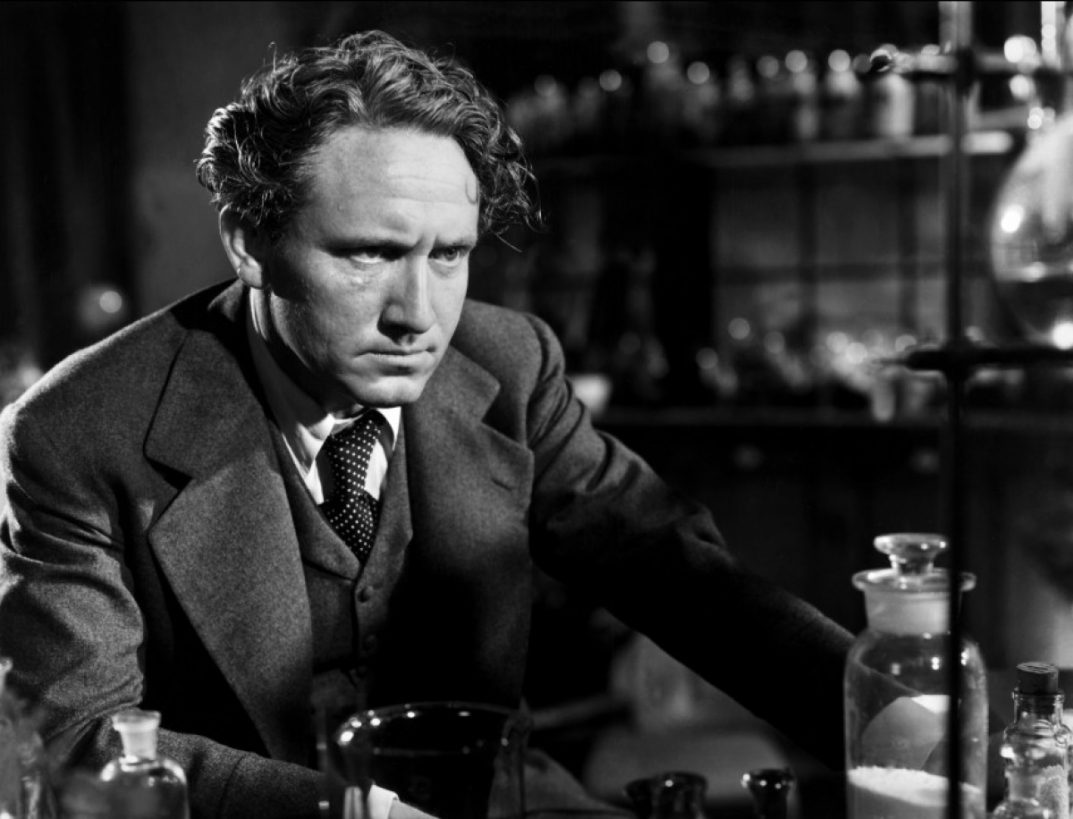 Maybe it was producer/director Fleming’s responsibility, as it was Michael Curtiz’s in Casablanca (1942). Memorably, it was that film’s producer, the legendary, hands-on Hal B. Wallis, who insisted that cinematographer Arthur Edeson elicit more contrasts, lights and shadows, in a scene in Rick’s cafe; the rushes revealed a flat, dull image which looked too much like what it was—a set.
Maybe it was producer/director Fleming’s responsibility, as it was Michael Curtiz’s in Casablanca (1942). Memorably, it was that film’s producer, the legendary, hands-on Hal B. Wallis, who insisted that cinematographer Arthur Edeson elicit more contrasts, lights and shadows, in a scene in Rick’s cafe; the rushes revealed a flat, dull image which looked too much like what it was—a set.
Dr. Jekyll, as expressed in that dinner scene, is in search of a chemical elixir that, as he says, will “separate those two selves [good and evil], free the good in man and . . . segregate the bad.” When he mentions the soul, the bishop (C. Aubrey Smith) feels that Jekyll is “invading his territory.” Soon, a chemical mixture produces a result, but not the one the good doctor wanted: instead of banishing immorality to make a perfect human being, the liquid transforms Jekyll into personified evil.
Now as Hyde, he seeks out Ivy, becoming a suitor of sorts—a stretch of plausibility that she never recognizes him as Dr. Jekyll who earlier saved her from street ruffians. He soon abuses her and frightens her into hysterics.
One night on his way to Beatrix’s house to make official their engagement, Jekyll slowly becomes Hyde without taking the chemicals. He changes his route, to Ivy’s. He strangles her and escapes through the alleyways, jumping over railings (doubled by Gil Perkins). He tries to access his laboratory through the back door, but recalls that, in a moment or remorse over his mistreatment of Ivy, he had melted the key in a small furnace.
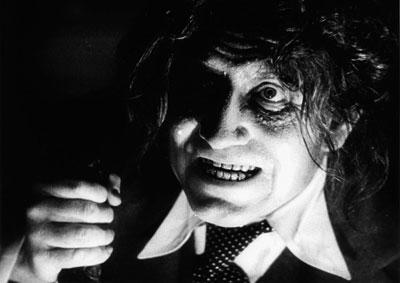 When he cannot smash the front door, he turns for help to a friend, Dr. Lanyon (Ian Hunter), who also fails to recognize Hyde as Jekyll. Hyde drinks the antidote, astonishing the doctor of course, then Jekyll rushes to tell Beatrix she must forget him. Her refusal to accept this brings on the Hyde side, she screams and Hyde kills her father when he comes to her aid.
When he cannot smash the front door, he turns for help to a friend, Dr. Lanyon (Ian Hunter), who also fails to recognize Hyde as Jekyll. Hyde drinks the antidote, astonishing the doctor of course, then Jekyll rushes to tell Beatrix she must forget him. Her refusal to accept this brings on the Hyde side, she screams and Hyde kills her father when he comes to her aid.
Dr. Lanyon recognizes Jekyll’s broken cane beside the body, realizes his friend is responsible for the murder and leads the police to the lab. Meantime, Hyde had pushed past the butler (Peter Godfrey) to reach the antidote, so when the police arrive he is questioned as Jekyll. But cornered, he transforms once again into Hyde. During a struggle, Lanyon shoots him, and as he dies, the face again, and for the last time, reverts to that of Dr. Jekyll.
[embedyt] https://www.youtube.com/watch?v=4-8FLz1IWhc[/embedyt]